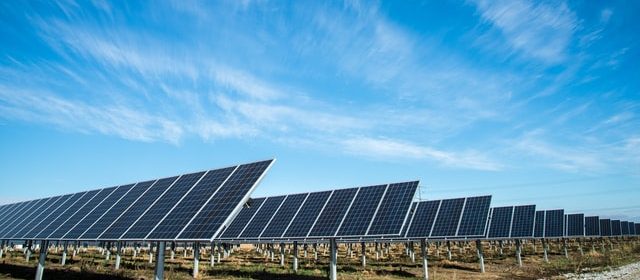Architecture is “the art and practice of designing and making buildings”, according to the Cambridge Dictionary. This sounds quite simple to begin with, but in reality it is way more complex than most people think. Architecture is about creating spaces that improve human life, that are durable for the long future, that are built with a purpose, and that are also aesthetically pleasing.
As buildings are impacted by current challenges and problems that are happening throughout the world, they have to adapt and be part of the solution. One of the biggest issues we are currently facing is the climate crisis. Architecture can help to make buildings more efficient and overall better for the environment. This process can be referred to as sustainable architecture.
What is Sustainable Architecture?
Sustainable architecture has the goal to minimize the impact of buildings on the environment by utilizing modern technologies, renewable resources and materials.
Why is Sustainable Architecture Important?
In order to create a sustainable future, in regards to the environment, real estate has to become sustainable. The reason is that buildings account for one third of the global energy consumption, as well as 40% of the CO2 emissions.
Thus they are accounting for a large part to the climate crisis we are facing at the moment. In order to stop this long-lasting issue, we need to find new technologies and inventions that can make the construction and operation of commercial and residential real estate more environmentally friendly.

What are the Elements of Sustainable Architecture?
In order to achieve this level of sustainable buildings, there are several solutions that can be implemented. These are the most common ones, since new technologies are getting developed and released, we will keep you up-to-date with the latest news on our website.
- Sustainable HVAC
One element of sustainable architecture is to improve “HVAC” or “Heating, Ventilation, Air Conditioning” systems. This solution can be divided into passive and active versions. Passive HVAC can be achieved by intelligent planning on the position of windows, the sizing of rooms, the position related to other buildings and their impact on lighting and shadows, and thanks to a good insulation.Furthermore, plants can improve the climate and help cool down rooms and areas inside or outside of a building. These can either be placed normally on the ground, or even on the facade. This technology is called green facade.
Active HVAC can become more sustainable by making them more efficient. This means they can regulate the climate easier and use less energy. A process that recaptures energy from unused sources such as waste or air can be implemented here.
Another example that might even be installed in many apartments and single family homes is water saving fixtures on taps. They can reduce the amount of water used while washing hands or taking a shower, and show how even small solutions can make a difference.
- Renewable Energy
The second important element of sustainable architecture is the generation of energy by relying on renewable sources. Most buildings have to rely on the electricity that is coming from the city’s power supply grid, but there are also technologies that allow them to create their own energy.Common solutions for this matter are solar panels installed on rooftops and facades. These come in different types. Photovoltaic panels are used to generate electricity and solar water heaters are able to produce warm water.
Another way to heat a building is by using so-called “Heat Pumps”. They extract thermal energy by using a special liquid that can absorb heat very efficiently. It then gets compressed to increase the temperature and heat the building.
- Sustainable Building Materials
The third element of sustainable architecture is the use of innovative building materials. Some examples for this section are recycled steel, concrete or stones. But also organic substances can be implemented including bamboo, wheat, cork, and even compressed earth.
- Waste Management
The last important element is the management of a building’s waste, which means the separation of different types of waste. This allows for easier recycling and thus can benefit the environment.

Conclusion
Sustainable Architecture is a key step in order to create environmentally friendly buildings and cities and thus help to fight the climate crisis. The most important elements of a sustainable building are efficient HVAC, the production of renewable energy, renewable building materials, and waste management.
By implementing these solutions residential and commercial real estate can become a key factor to reaching the UN’s sustainable development goals and lay the foundation for smart cities
If you want to learn more about smart cities and sustainable real estate, feel free to take a look at our other blog articles.

